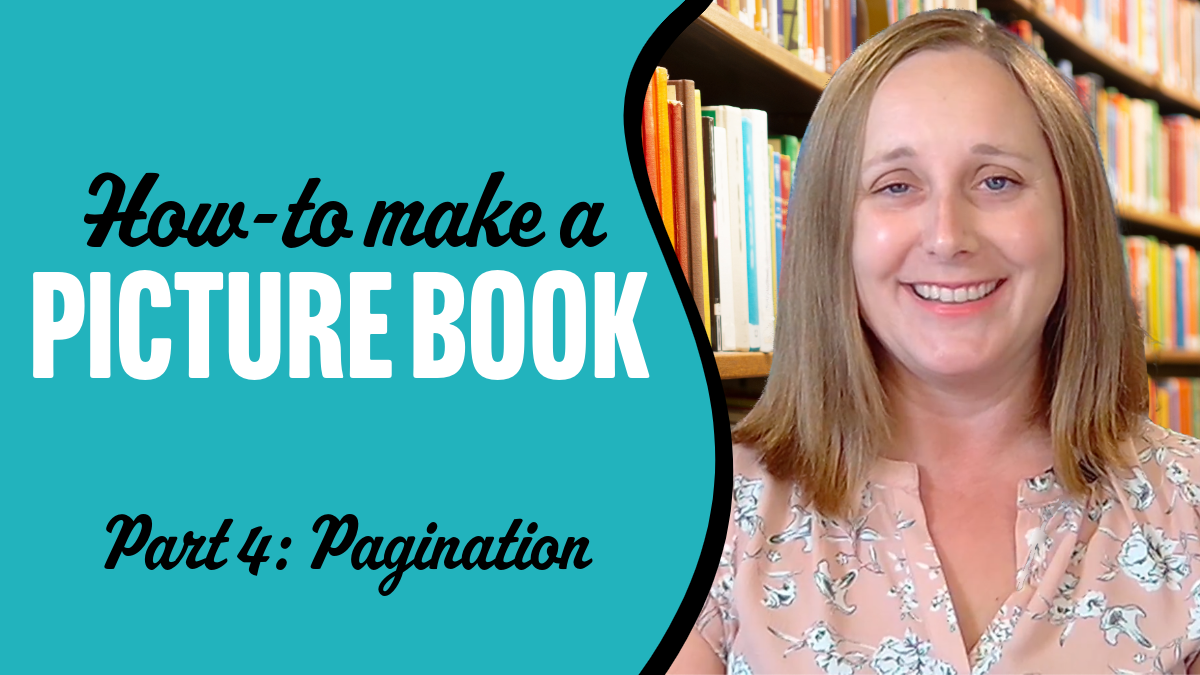
So, you’ve written and edited your story, and now it’s time to paginate your manuscript. Paginating is all about figuring out how your story will flow across the pages of a picture book. In this video, I’ll guide you through the key aspects of pagination, including page turns, pacing, and emotional impact.
Picture Book Layout
Standard picture books are either 32 or 40 pages, with non-fiction picture books going up to 96 pages. These numbers comes from how books are printed. A 32-page picture book can be printed on one sheet of paper, saving paper and cost. WritersRumpus.com has a great post about printing if you want more nitty-gritty about how it is printed.
You really only have 24 pages to tell your story. How do we divide the book into those pages?
Page Turns
Let’s start with page turns. In a picture book, each page turn should feel intentional. It’s more than just flipping to the next part of the story—it’s about creating suspense, surprise, or anticipation. Think of each page turn as an opportunity to engage your reader.
For example, you might end a page with a cliffhanger or a question, making the reader eager to turn the page and see what happens next. Well-placed page turns can make your story feel dynamic and keep the reader excited.
In Tiny Barbarian, by Ame Dyckman, every page has a cliffhanger to encourage reading to the next page. The first page ends in the middle of a sentence… “Tiny has already conquered many things:” You turn the page to find out what he’s conquered. The next page also ends in the middle of a sentence… “He’s only been a Barbarian since…” you turn the page to find out when he became a Barbarian. And so on. Take a look at some of your favorite picture books and see how the page turns build suspense or excitement.
Closely related to page turns is the pacing of your story. Pacing determines how quickly or slowly your story unfolds and how your reader experiences it.
Pacing
In a picture book, pacing is everything. You have a limited number of pages and within those pages, you need to build a beginning, middle, and end that feels complete and satisfying. To get the pacing right, think about the rhythm of your story. Are there moments that need to slow down to let the reader savor a scene? Or should parts move quickly to build excitement? Balancing slow and fast-paced sections can create a rhythm that feels natural and engaging.
As you’re paginating, keep in mind the emotional journey you want your reader to experience. Every turn of the page should contribute to building that emotional impact.
Emotional Impact
Whether your story is funny, heartwarming, or suspenseful, the emotional impact you create is what will make it memorable. As you paginate, think about how each page contributes to the emotions you want to evoke. For example, you might use a quiet, reflective moment before a big reveal to heighten the surprise or end a page with a visual or textual punchline to land a joke. By strategically placing emotional beats throughout your manuscript, you ensure that your reader feels exactly what you want them to feel at the right moments.
Let me share a book that is so perfectly crafted that I both laugh and cry every time I read it. “Love You Forever” by Robert Munsch.
Finally, I want to share a resource that has been incredibly helpful to me in understanding pagination: the Children’s Book Pro course from SVS Learn.
SVS Learn: Children’s Book Pro
SVS Learn offers a course called Children’s Book Pro, which is an in-depth guide to creating picture books. This course covers everything from story structure to illustrating, and it has a fantastic section on paginating your manuscript. The instructors break down real picture books, showing how pacing, page turns, and emotional impact come together to create a compelling story. If you’re serious about picture book creation, I highly recommend checking it out. It’s a great way to deepen your understanding of picture books.
Paginating a manuscript is like choreographing a dance—every move needs to be just right to keep your audience engaged. By carefully planning your page turns, pacing your story thoughtfully, and crafting each page for maximum emotional impact, you’ll create a picture book that resonates with readers. Don’t forget to explore resources like SVS Learn’s Children’s Book Pro to continue learning and refining your skills.
Storm Trucks Available Now
My book, Storm Trucks, is available to pre-order through Kickstarter right now as a beautifully printed hardback - and there are bonus items available to go with it: bookmarks, stickers, and an ebook version. The link is below so you can see all the goodies and be part of making this book a reality!




0 Comments